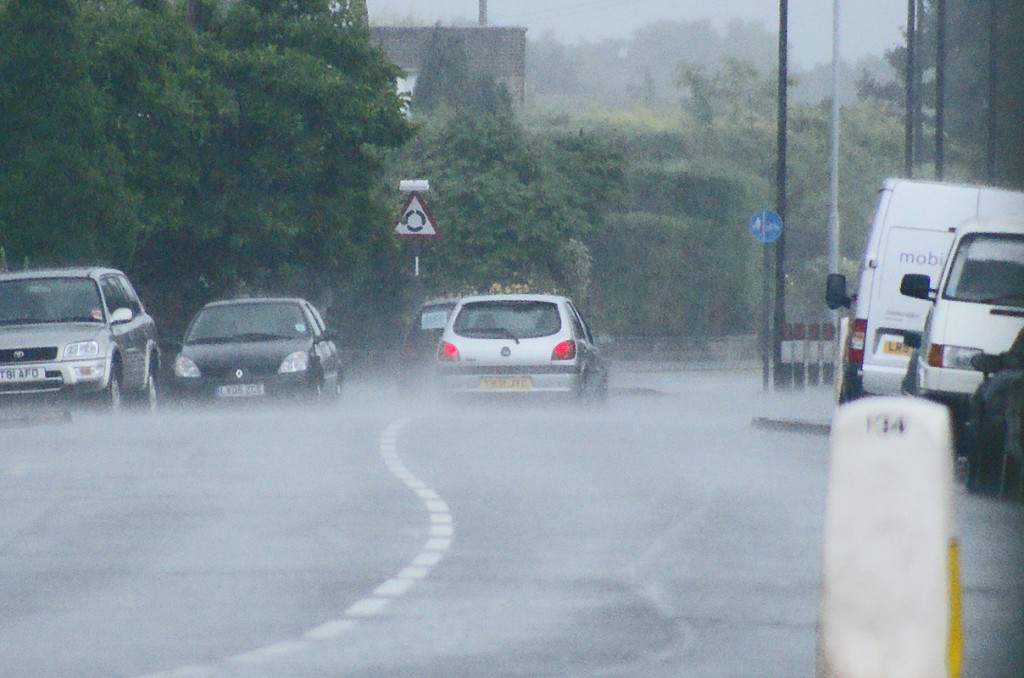Hydroplaning occurs when a vehicle loses traction and the driver loses control on a wet surface. It is a frightening experience and a serious hazard for drivers. It is important for drivers to understand the causes of hydroplaning and know how to navigate through it. It is also helpful to know how proper tire maintenance can significantly reduce the chances of a hydroplaning occurrence.

What Causes Vehicles to Hydroplane?
Hydroplaning occurs when a layer of water develops between the tires of a vehicle and the road surface. This layer prevents the tires from making full contact with the road, leading to a loss of traction and control. Understanding hydroplaning includes recognizing factors that contribute to it:
- Speed – Driving at high speeds reduces the tire’s ability to channel water away through its tread, making it more likely it is to hydroplane.
- Water Depth – While even a small amount of water can cause hydroplaning, deeper water does increase the risk.
- Tire Condition – Worn-out tires with insufficient tread depth cannot effectively disperse water, increasing the chances of hydroplaning.
- Vehicle Weight – Lighter vehicles are more prone to hydroplaning.
Navigating Through or Avoiding Hydroplaning
To avoid or safely navigate through hydroplaning, drivers should consider the following tips:
- Reduce speed on wet roads. Reducing speed gives the tires more time to scatter water and maintain contact with the road.
- Avoid overreaction. Abrupt steering, braking, or accelerating can lead to loss of control. Gentle, gradual movements are safer.
- Avoid areas with standing water when possible. Try to drive in the tracks of the vehicle ahead, where water has already been displaced. Avoid large puddles when possible.
- Maintain a safe following distance. Increase the distance between your vehicle and the one ahead to allow more reaction time if the car in front hydroplanes.
The Role of Tire Maintenance in Preventing Hydroplaning
Keeping tires in good condition is crucial for safe driving in general. The following are some tire factors that can specifically affect your vehicle’s resistance to hydroplaning.
Tread Depth – Tires should have a minimum tread depth of 2/32 inches, though more tread is better for wet conditions. Deeper treads channel water more efficiently.
Proper Inflation – Properly inflated tires maintain optimal surface contact and water dispersion.
Regular Inspections – Addressing signs of tire wear, damage, or uneven tread early helps to assure a safer ride.
Rotate Tires – Regular tire rotation promotes even tread wear, enhancing overall traction and reducing the risk of hydroplaning.
By understanding hydroplaning, knowing its causes, practicing safe driving techniques, and maintaining your tires, you can significantly reduce the risk of losing control on wet roads.